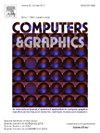基于几何感知的航空激光雷达点云光伏能量估计
IF 2.8
4区 计算机科学
Q2 COMPUTER SCIENCE, SOFTWARE ENGINEERING
引用次数: 0
摘要
空中激光雷达(和摄影测量)调查正在成为土地和城市管理中的一种常见做法,空中点云(或重建表面)越来越多地被用作自然和建筑结构的数字表示,用于监测和模拟城市过程或生成假设场景。对建筑环境的“数字孪生”的几何分析有助于提供定量证据,以支持城市政策,如规划干预措施和向可再生能源过渡的激励措施。在这项工作中,我们提出了一种基于几何的方法来有效和准确地估计城市屋顶产生的光伏(PV)能量。该方法结合了一种原始拟合技术,用于从航空激光雷达数据中检测和表征建筑屋顶组件,并采用优化策略来确定每个屋顶表面上光伏模块的最大数量和最佳位置。根据每个光伏组件接收到的太阳辐射和邻近建筑物或树木投射的阴影以及效率要求,估算每座建筑物在特定时间段(例如一年)的光伏系统的发电量。所提出的方法的优势在于它能够将计算技术、领域专业知识和异构数据结合到一个逻辑和自动化的工作流中,并在意大利具有复杂形态的大规模真实城市地区对其有效性进行评估和测试。本文章由计算机程序翻译,如有差异,请以英文原文为准。
Geometry-aware estimation of photovoltaic energy from aerial LiDAR point clouds
Aerial LiDAR (and photogrammetric) surveys are becoming a common practice in land and urban management, and aerial point clouds (or the reconstructed surfaces) are increasingly used as digital representations of natural and built structures for the monitoring and simulation of urban processes or the generation of what-if scenarios. The geometric analysis of a “digital twin” of the built environment can contribute to provide quantitative evidence to support urban policies like planning of interventions and incentives for the transition to renewable energy. In this work, we present a geometry-based approach to efficiently and accurately estimate the photovoltaic (PV) energy produced by urban roofs. The method combines a primitive fitting technique for detecting and characterizing building roof components from aerial LiDAR data with an optimization strategy to determine the maximum number and optimal placement of PV modules on each roof surface. The energy production of the PV system on each building over a specified time period (e.g., one year) is estimated based on the solar radiation received by each PV module and the shadow projected by neighboring buildings or trees and efficiency requirements. The strength of the proposed approach is its ability to combine computational techniques, domain expertise, and heterogeneous data into a logical and automated workflow, whose effectiveness is evaluated and tested on a large-scale, real-world urban areas with complex morphology in Italy.
求助全文
通过发布文献求助,成功后即可免费获取论文全文。
去求助
来源期刊

Computers & Graphics-Uk
工程技术-计算机:软件工程
CiteScore
5.30
自引率
12.00%
发文量
173
审稿时长
38 days
期刊介绍:
Computers & Graphics is dedicated to disseminate information on research and applications of computer graphics (CG) techniques. The journal encourages articles on:
1. Research and applications of interactive computer graphics. We are particularly interested in novel interaction techniques and applications of CG to problem domains.
2. State-of-the-art papers on late-breaking, cutting-edge research on CG.
3. Information on innovative uses of graphics principles and technologies.
4. Tutorial papers on both teaching CG principles and innovative uses of CG in education.
 求助内容:
求助内容: 应助结果提醒方式:
应助结果提醒方式:


